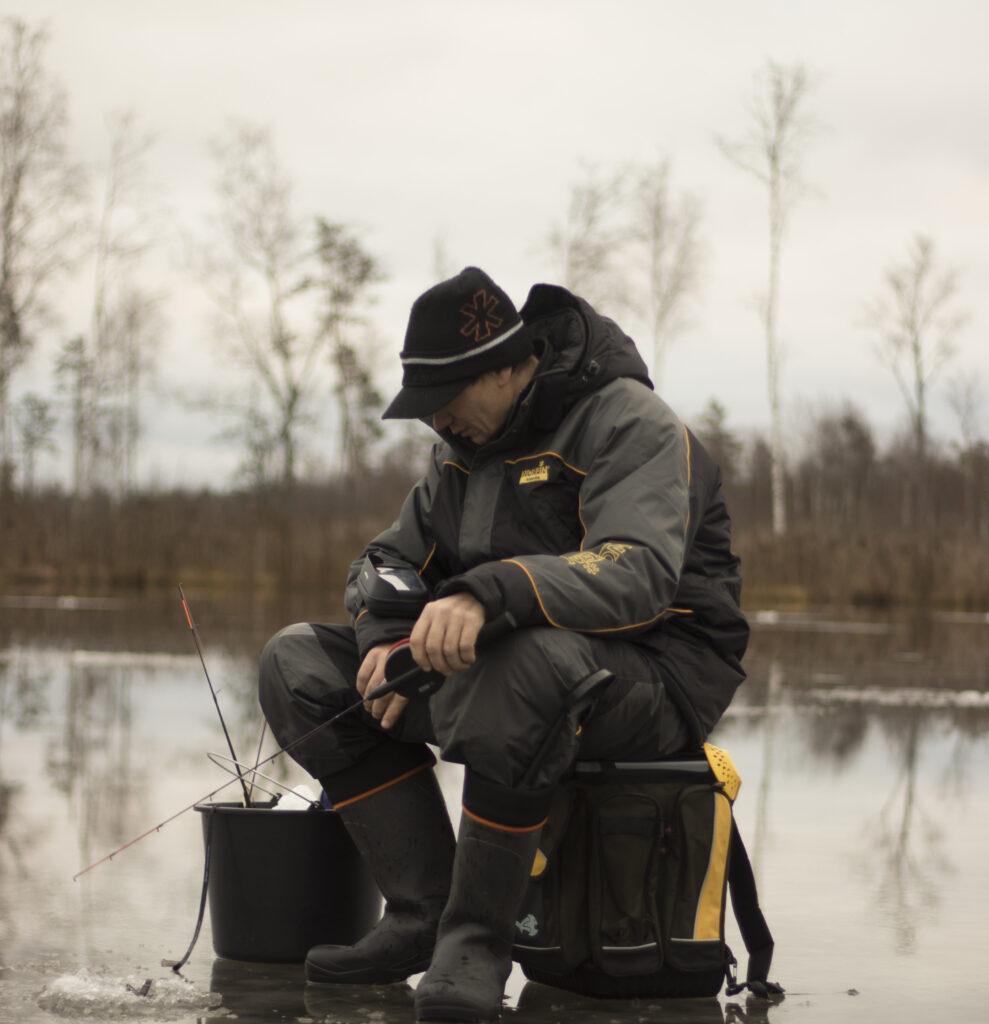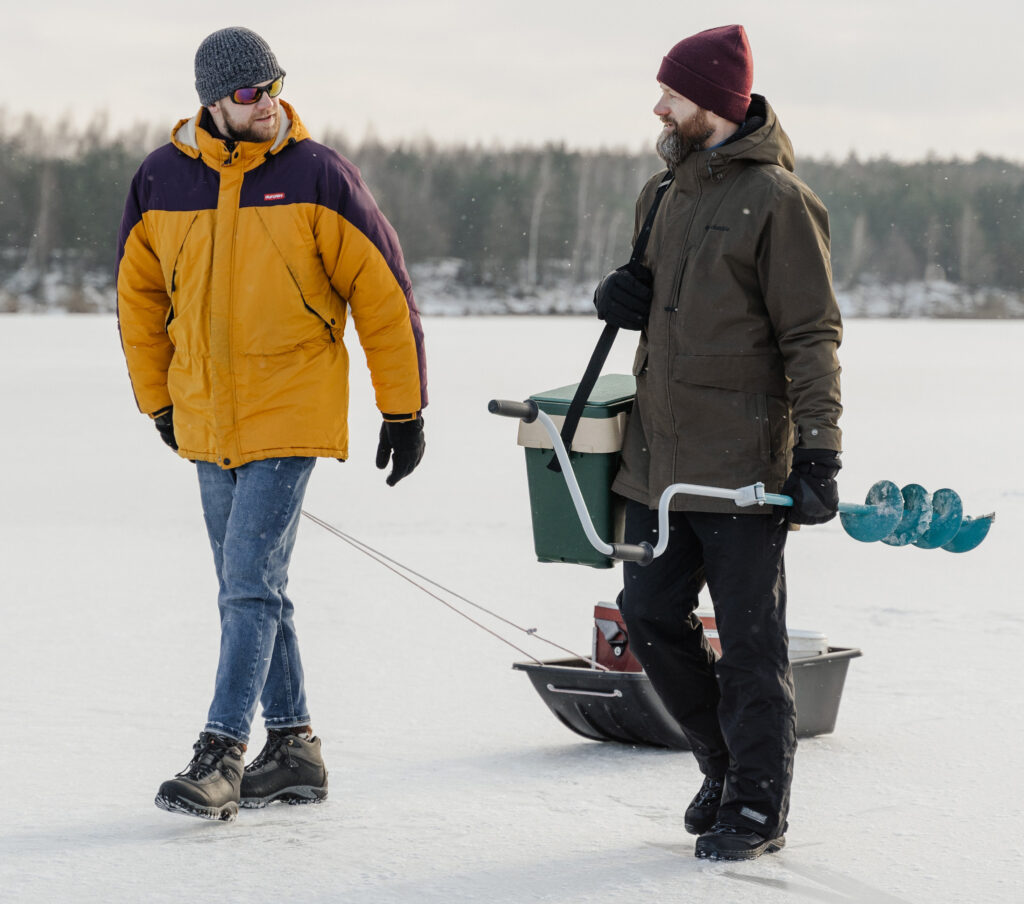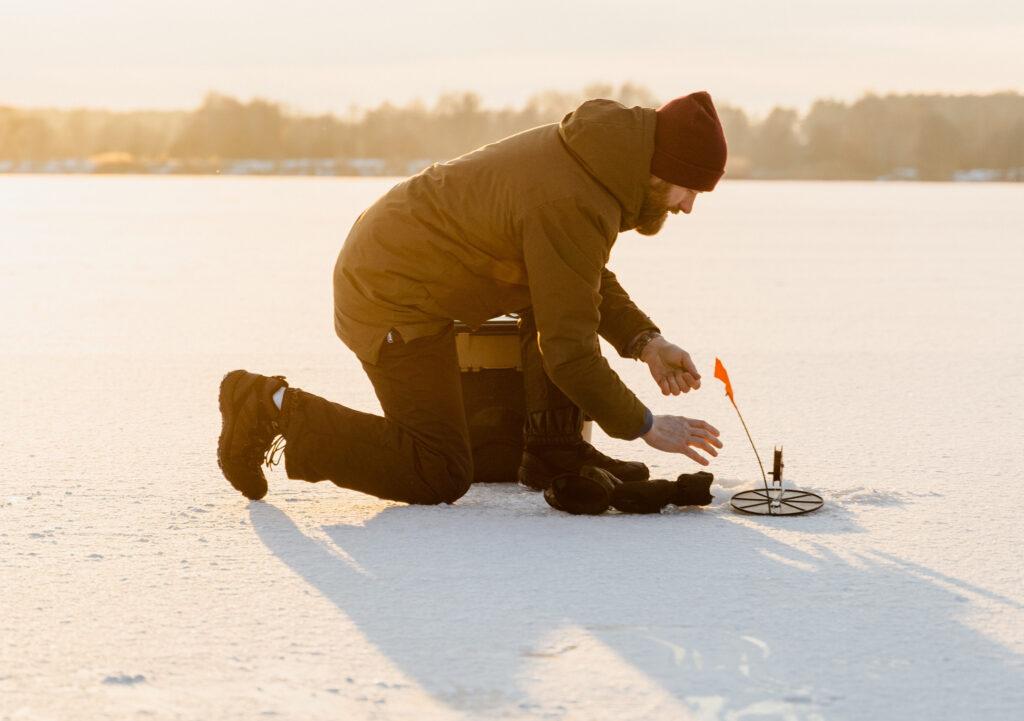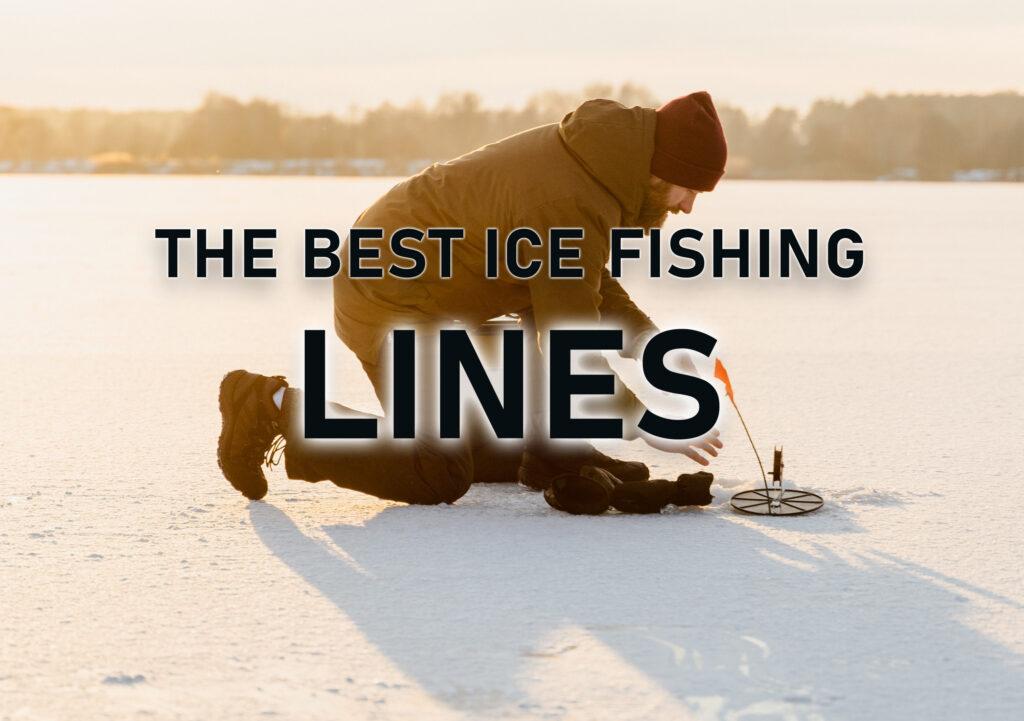What’s the best fishing line to use when ice fishing?
The three main choices are monofilament, fluorocarbon, and braided line. Each is useful while ice fishing and has its own advantages and disadvantages. The best ice fishing line is determined by the fishing depth, the species you are fishing for, and your budget.
Knowing these key factors will help determine the best ice fishing line for you.
Other considerations when ice fishing includes the color of the line, the pound test of the fishing line, and whether or not a leader is appropriate to use when ice fishing. We will go over all of these and more below. As well as outlining the pros and cons of each type of ice fishing line, we’ve included the best ice fishing lines for each category.
Key Takeaways
- The three main choices for ice fishing line are monofilament, fluorocarbon, and braided line, each with its own advantages and disadvantages.
- The best ice fishing line depends on factors such as fishing depth, targeted species, and budget.
- Monofilament is affordable and useful in shallow waters, but not recommended for fishing depths of 15 feet or more.
- Fluorocarbon has a higher density, better abrasion resistance, and is nearly invisible underwater, making it suitable for fishing depths of 2 to 40 feet and species with sharp teeth.
- Braided line doesn’t stretch and provides great sensitivity but can accumulate ice build-up on the line and is more expensive than other options.
- Matching the line pound test with target species is important, and clear line is the best color for ice fishing. A leader is recommended when using braided line, and tying a couple of feet’s worth of leader ensures the knot won’t rub against the ice hole.
Ice Fishing Monofilament

Monofilament is one of the most widely available ice fishing lines. It is relatively inexpensive. Less than $10 should be able to spool your fishing reel.
It is very stretchy. This can be an advantage and disadvantage.
In shallow waters, monofilament is useful because it keeps the pressure on the fish as they struggle to get away.
In deeper water, monofilament can be detrimental because the stretch of the line can mask the pull of the fish. If this happens when ice fishing in deep water, you may not even feel the fish striking your lure or bait.
Ice fishermen often use monofilament while fishing panfish such as perch and bluegill. If that’s you, our article Where to Find Perch Ice Fishing [Consistent Hotspots] will help you catch more perch this season.
If fishing at a depth of 15 feet or more, then do not use monofilament. Anything less than 15 feet than using monofilament is useful.
A 4 lb. weighted line is right for ice fishing with monofilament. If fishing for anything that requires a heavier lb. test, then use either fluorocarbon or braid.
| Advantages | Disadvantages |
| -Affordable -Provides stretch, which is useful in shallow waters -It is hard for fish to see | -Limited use when ice fishing -The stretch of the line doesn’t help when fishing deep water (15 feet+) -It’s only useful if using 4lb. test or less |
The Best Monofilament for Ice Fishing:
No products found.
Ice Fishing Fluorocarbon

The fluorocarbon ice fishing line looks very similar to monofilament but is designed much differently. For one, fluorocarbon doesn’t stretch nearly as much as mono. Also, fluorocarbon has a much higher density as well. Because of the higher density, it helps get jigs deeper into the water.
The higher density of fluorocarbon also provides much better abrasion resistance. This is useful during ice fishing because the line can run against the opening in the ice and break.
Additionally, fluorocarbon transmits light underwater. This makes the line virtually invisible underwater, a huge advantage while fishing.
Fluorocarbon is appropriate for ice fishing at depths of 2 to 40 feet. It is also great for fishing for species with sharp teeth, such as pike and walleye. The density and strength of fluorocarbon make it less likely to be cut if a fish were to bite it.
Because fluorocarbon doesn’t stretch, it can be susceptible to knots failing as well as breaking due to its lessened shock resistance. The water when ice fishing is extremely cold and can cause further problems for fluorocarbon.
| Advantages | Disadvantages |
| -Affordable -High density provides added strength -Nearly invisible underwater | -Susceptible to breaking during large strikes from fish -Knots fail if not done perfectly -Inflexibility can cause line breaks at the reel |
The Best Fluorocarbon for Ice Fishing:
No products found.
Ice Fishing Braid

There are two primary braided ice fishing lines: thermally fused braids and woven braids.
For ice fishing, thermally fused braids are better. This is because fused braids have much less surface area and tend to not have as much ice formation built up on them when compared to woven braided lines.
A downside of braided line, regardless of which braided line you choose, is that this type of ice fishing line accumulates ice along the line compared to monofilament and fluorocarbon.
A huge advantage of a braided ice fishing line is that it doesn’t stretch. None. Zero. A braided fishing line is notorious for its ability to withstand stretching, which is good for some scenarios.
A braided line is the best when fishing for pan fish such as bluegill and crappie. The reason is that these species bite the lure very lightly, and the braided line helps you feel their tug. If you can detect the bite, the likelihood of landing the fish increases. Our article, What Is The Best Bait For Ice Fishing? [Successful Catches] is an overview on what works best for different species common while ice fishing.
Also, a braided line helps you set the hook. Because it doesn’t give any stretch, it ensures a good set when striking the fish.
Unfortunately, braided line for ice fishing is expensive relative to the alternatives. It can be 2-4 times more expensive when compared to the monofilament or fluorocarbon alternatives.
Braid is not transparent. It is very easy for fish to see.
When using braided line for ice fishing, use a fluorocarbon leader so that the fish cannot see the bait. When tying a leader onto a braid, make sure to tie a couple of feet’s worth of leader. If tied short, the knot where the braided line and fluorocarbon leader meet will rub against the ice hole when pulling out the fish. If this happens, the line can sheer at either the leader or main braided line.
| Advantages | Disadvantages |
| -Extremely strong -Doesn’t stretch at all -Provides great sensitive when feeling for bites | -Expensive -Accumulates ice build-up on the line -Very visible underwater |
The Best Braid for Ice Fishing:
No products found.
FAQ
The best size line for ice fishing is a pound test that matches the species of fish you are going after. For instance, if you are ice fishing for bluegill, which are often less than 1 pound, a 4lb pound weight test line is perfect. What Weight Line for Ice Fishing is Best? [Tried and True Info] is an article we created just for this question.
Braid is a more versatile ice fishing line. Although more expensive, braid is great for any depth of fishing and most species. The one downside is that it often requires a leader because it is a highly visible.
The best color of line for ice fishing is clear. Monofilament is good at this, while fluorocarbon is extremely invisible underwater. Clear is the best color for ice fishing because it is undetectable by fish.
Match the pound line with the species you are fishing. For instance, if you are fishing for pike then a 25-pound test line of braided line would work. Couple the braid with a fluorocarbon leader of equal or higher pound test.
Use a leader while ice fishing when using braided line. This provides the near-invisible aspects of fluorocarbon and the strength of braided line. Just make sure to make an appropriate knot to join the two lines.
